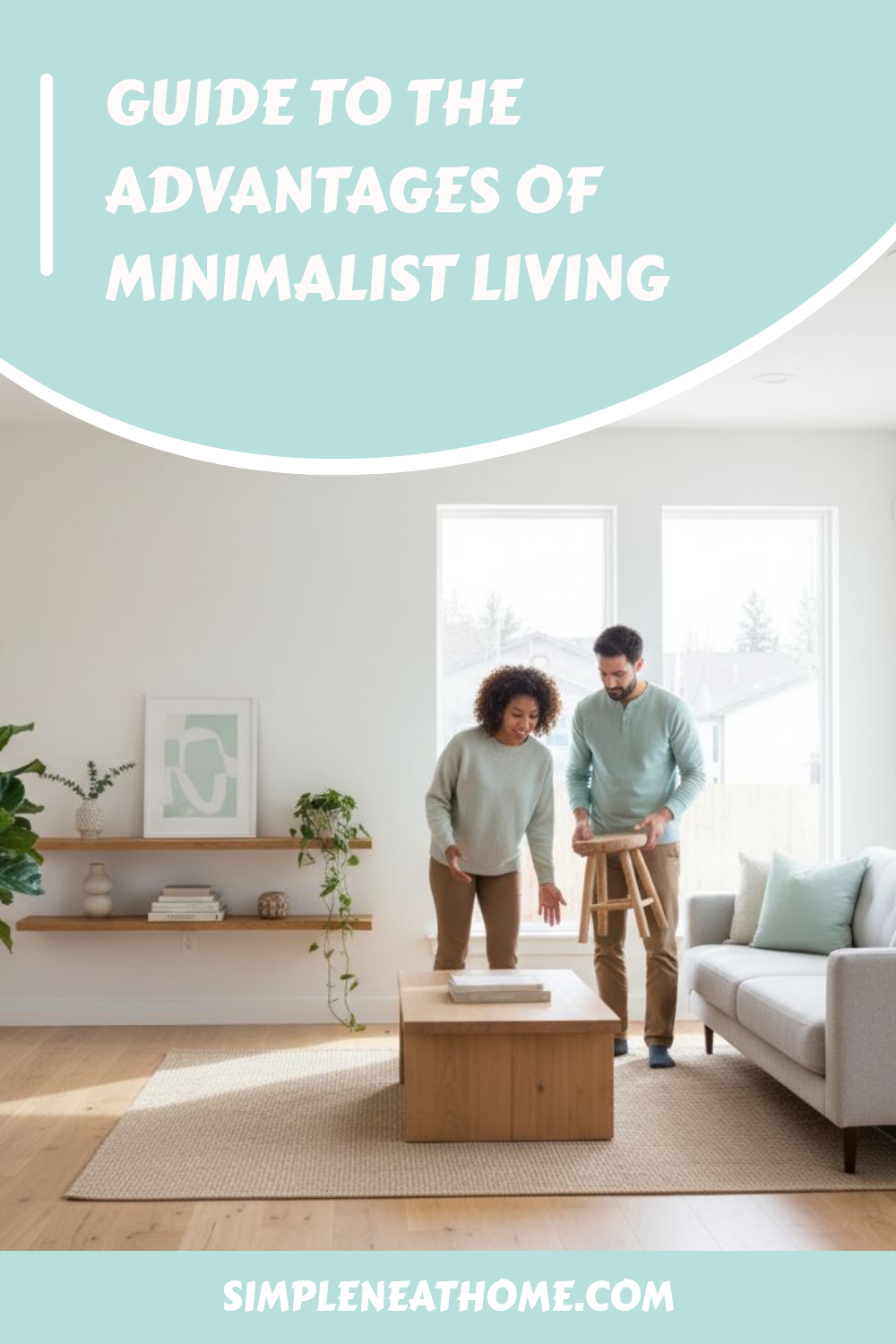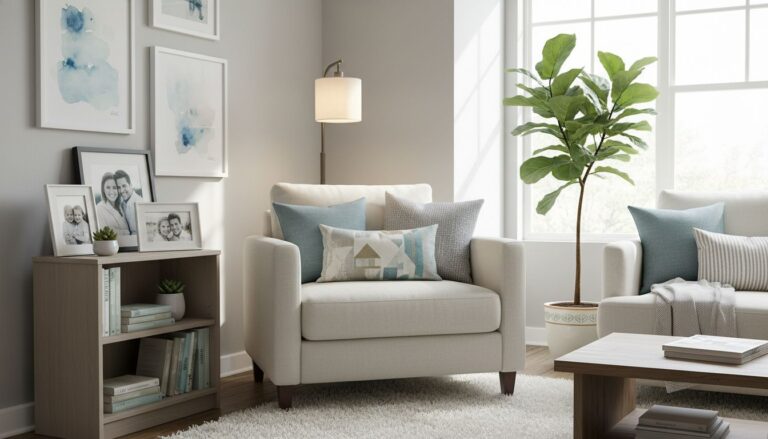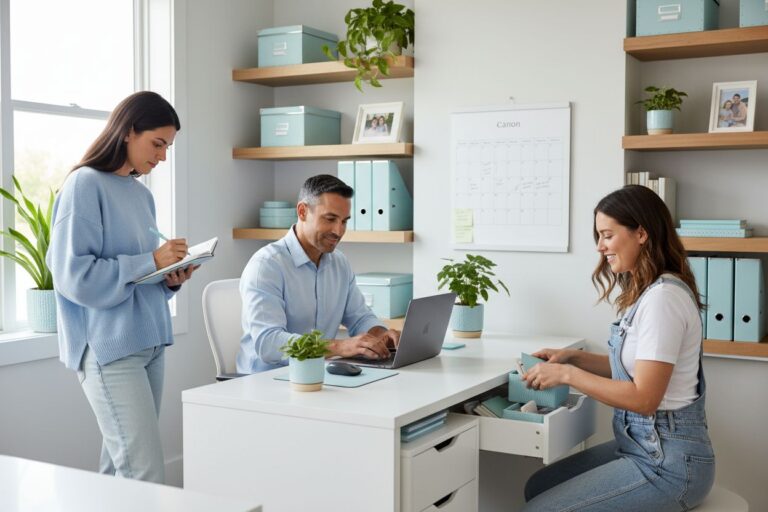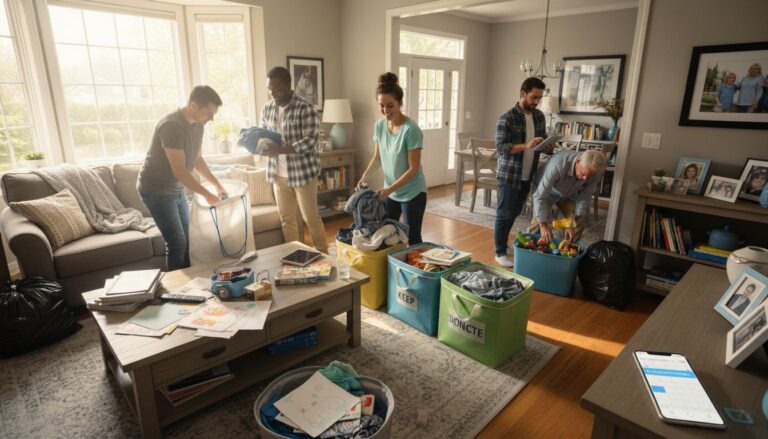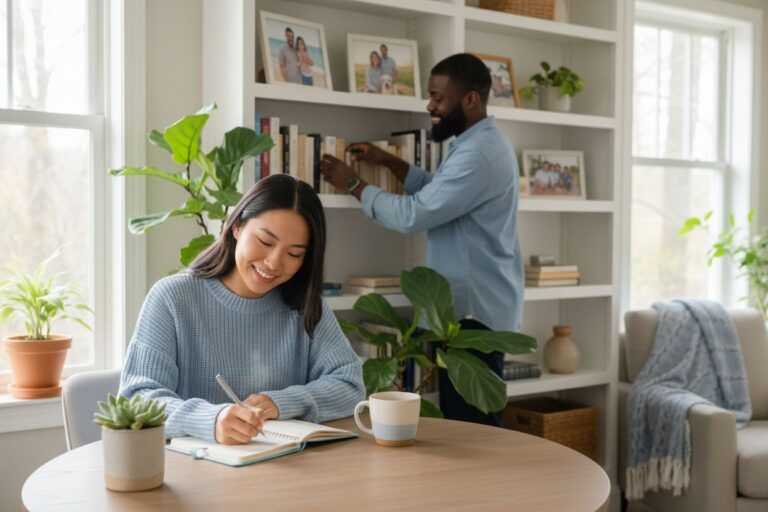Guide to the Advantages of Minimalist Living
Did you know that the average home in the United States contains over 300,000 items? With so much clutter, it is easy to feel overwhelmed and stressed. Minimalist living offers a way to cut through the noise by focusing on simplicity, intentional choices, and personal well-being. By understanding the basic principles of minimalism, you can discover practical strategies for reducing both physical and mental clutter, letting you enjoy more purposeful and peaceful days.
Key Takeaways
| Point | Details |
|---|---|
| Embrace Intentional Living | Minimalism focuses on simplifying life through intentional choices, prioritizing what truly matters, and decluttering both physically and mentally. |
| Tailored Minimalism | There are various types of minimalism, including digital, aesthetic, and emotional, allowing individuals to adapt the philosophy to their unique preferences and needs. |
| Stress Reduction Benefits | A minimalist environment reduces clutter, which can alleviate stress, enhance mental clarity, and improve overall emotional well-being. |
| Avoid Common Pitfalls | Successful minimalism requires a strategic and gradual approach, avoiding all-or-nothing mentalities and comparing personal journeys to others. |
Table of Contents
- Defining Minimalist Living Principles And Concepts
- Types Of Minimalism And Lifestyle Variations
- Key Benefits: Financial, Emotional, And Physical
- How Minimalist Living Reduces Stress And Clutter
- Common Mistakes And How To Avoid Them
Defining Minimalist Living Principles and Concepts
Minimalist living is more than just decluttering your space – it’s a deliberate lifestyle philosophy centered on simplicity, intentionality, and personal freedom. According to research on simple living movements, minimalism involves consciously reducing possessions, technology dependence, and consumption to focus on what truly matters in life.
At its core, minimalist living reflects a mindset prioritizing:
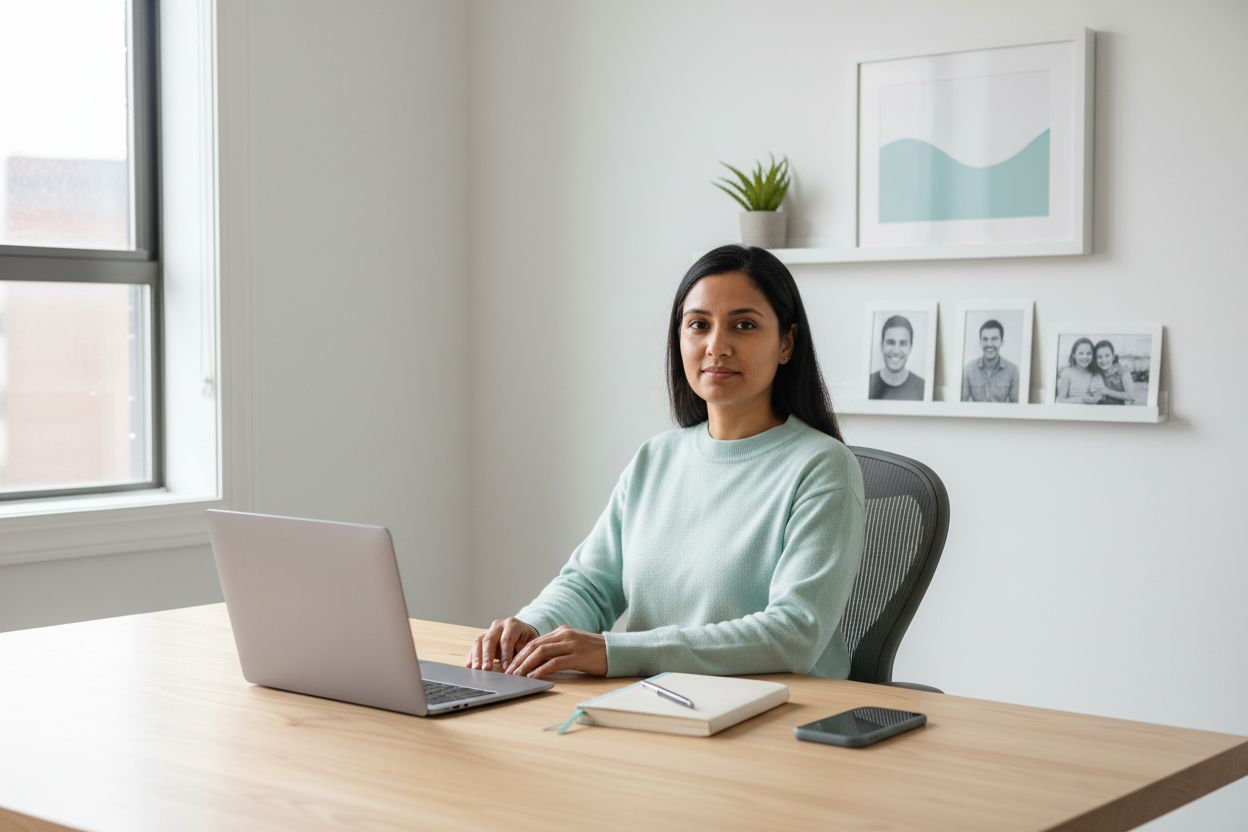
- Frugality and intentional spending
- Enhanced work-life balance
- Personal well-being and stress reduction
- Environmental sustainability
- Spiritual and emotional clarity
This lifestyle isn’t about living with nothing. Instead, it’s about being strategic with what you keep and intentional about your choices. Learn more about minimalist living principles to understand how this approach can transform your daily experience. By curating your physical environment and personal commitments, you create space for meaningful experiences, relationships, and personal growth.
The beauty of minimalism lies in its flexibility. There’s no universal template – it’s a personal journey of discovering what adds genuine value to your life and systematically removing distractions that drain your energy and attention. Whether you’re looking to simplify your wardrobe, streamline your digital life, or redesign your living space, minimalist principles offer a powerful framework for creating more intentional, peaceful living.
Types of Minimalism and Lifestyle Variations
Minimalism isn’t a one-size-fits-all approach. Instead, it’s a dynamic concept with multiple interpretations and lifestyle adaptations that can be tailored to individual preferences, values, and circumstances. Lifestyle minimalism comes in various forms, each offering unique strategies for simplifying and enhancing different aspects of life.
Here are some primary types of minimalist approaches:
- Digital Minimalism: Reducing technology consumption, managing screen time, and curating digital spaces
- Aesthetic Minimalism: Focusing on clean, simple design and visual simplicity in living spaces
- Practical Minimalism: Strategically reducing possessions to improve functionality and reduce stress
- Financial Minimalism: Prioritizing intentional spending, reducing debt, and maximizing financial freedom
- Emotional Minimalism: Decluttering relationships and mental spaces to promote psychological well-being
Explore different minimalist approaches to find the style that resonates with your personal goals and lifestyle. Each variation offers unique benefits, allowing you to customize minimalism to fit your specific needs. Some people might embrace a radical, extreme minimalist approach with very few possessions, while others prefer a more moderate interpretation that simply involves being more intentional about consumption and lifestyle choices.
Here’s a comparison of the main types of minimalist approaches:
| Type | Focus Area | Example Strategies |
|---|---|---|
| Digital Minimalism | Screen time Online clutter |
Limit apps Curate inbox |
| Aesthetic Minimalism | Home decor Visual space |
Neutral colors Simple layouts |
| Practical Minimalism | Daily life Belongings |
Fewer tools Multi-use items |
| Financial Minimalism | Spending Money management |
Track expenses Reduce debt |
| Emotional Minimalism | Relationships Mental space |
Set boundaries Journaling |
The key is understanding that minimalism isn’t about deprivation – it’s about creating space for what truly matters. Whether you’re drawn to a sleek, sparse aesthetic or simply want to reduce mental clutter, there’s a minimalist approach that can help you live more deliberately and meaningfully. Your minimalist journey is deeply personal, and it should evolve as your life circumstances, priorities, and understanding of what brings you joy continue to change.
Key Benefits: Financial, Emotional, and Physical
Minimalism offers transformative benefits that extend far beyond simply owning fewer things. By intentionally reducing excess and focusing on what truly adds value, you can experience profound improvements across multiple dimensions of your life – financial, emotional, and physical.
Financial Benefits
Minimalist living creates significant financial advantages:
- Reduced impulse spending and unnecessary purchases
- Lower expenses on consumer goods and unnecessary items
- Increased savings potential
- More strategic investment of resources
- Decreased debt and financial stress
Emotional and Mental Benefits
Beyond monetary gains, minimalism provides powerful psychological advantages:
- Reduced anxiety from cluttered environments
- Enhanced mental clarity and focus
- Greater emotional bandwidth for meaningful relationships
- Decreased stress from material management
- Increased sense of personal freedom and control
Learn more about the advantages of minimalism at home to understand how this lifestyle can fundamentally transform your well-being. The physical benefits are equally compelling. By simplifying your environment and possessions, you create more physical space that translates into reduced cleaning time, easier home maintenance, and a more peaceful living atmosphere.
Ultimately, minimalism is about intentional living. It’s not about deprivation, but about creating space – both literally and metaphorically – for what genuinely matters.
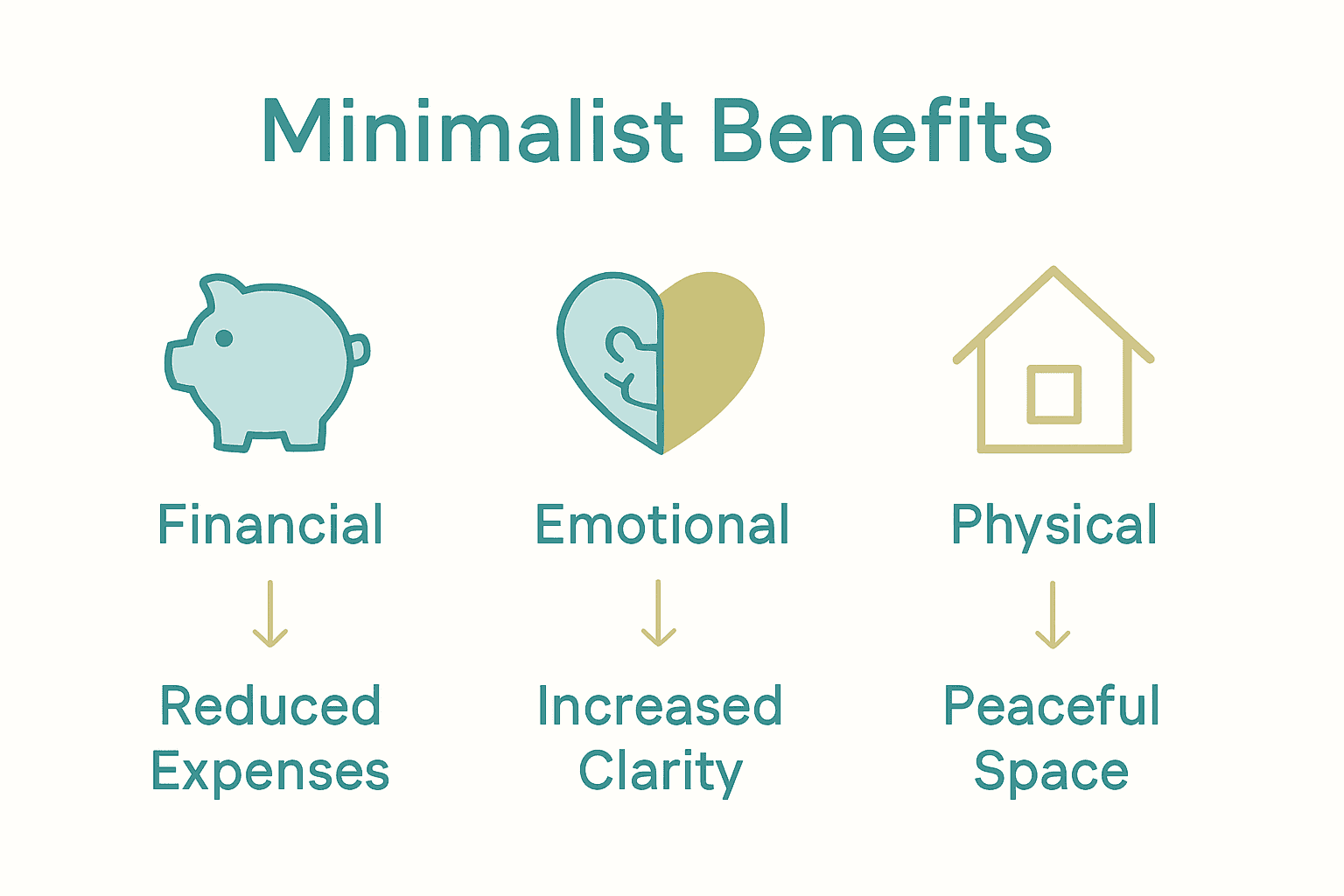 Whether you’re seeking financial freedom, emotional peace, or a more organized physical environment, minimalist principles offer a powerful pathway to a more deliberate and satisfying life experience.
Whether you’re seeking financial freedom, emotional peace, or a more organized physical environment, minimalist principles offer a powerful pathway to a more deliberate and satisfying life experience.
How Minimalist Living Reduces Stress and Clutter
Clutter isn’t just a visual nuisance – it’s a silent stress generator that can significantly impact your mental and emotional well-being. Neurological research reveals that cluttered environments directly trigger physiological stress responses, with studies showing that chaotic spaces can raise cortisol levels by approximately 30%, leading to increased anxiety and reduced cognitive performance.
The Stress-Clutter Connection
When your physical environment feels overwhelming, your brain experiences constant low-grade stress. This manifests through:
- Decreased ability to focus
- Heightened feelings of anxiety
- Impaired sleep quality
- Reduced sense of personal control
- Increased mental fatigue
Learn effective strategies to reduce household clutter and create a more peaceful living environment. Minimalist living offers a strategic approach to combating this stress by intentionally curating your physical space. By systematically removing unnecessary items and creating organized, purposeful environments, you’re not just cleaning – you’re actively designing a space that supports your mental health and emotional resilience.
The transformative power of minimalism lies in its ability to create cognitive breathing room. When you eliminate visual noise and unnecessary possessions, you’re essentially giving your brain permission to relax. Your living space becomes a sanctuary of calm, where each item has purpose and meaning. This deliberate approach doesn’t just reduce physical clutter – it creates mental clarity, allowing you to focus on what truly matters and significantly lowering your daily stress levels.
Common Mistakes and How to Avoid Them
Embracing minimalism is a personal journey, but many people stumble into common pitfalls that can derail their efforts to simplify their lives. The most critical mistake is treating minimalism as an all-or-nothing proposition, which often leads to frustration and eventual abandonment of the entire concept.
Common minimalist mistakes include:
- Purging everything at once without a strategic plan
- Focusing solely on physical possessions
- Comparing your minimalist journey to others
- Buying replacement items immediately after decluttering
- Feeling guilty about keeping items with sentimental value
- Attempting to achieve a picture-perfect minimalist aesthetic
Discover practical tips for avoiding minimalist pitfalls and create a sustainable approach to simplifying your life. The key is understanding that minimalism isn’t about creating a sterile environment or getting rid of everything you own. Instead, it’s about being intentional with your possessions and creating space for what truly matters.
Successful minimalism requires a gradual, compassionate approach. Start by making small, consistent changes rather than dramatic overnight transformations. Remember that your minimalist journey is unique – there’s no universal template that works for everyone. Some people thrive with fewer possessions, while others find balance with a more moderate approach. The goal is to create a lifestyle that brings you peace, reduces stress, and allows you to focus on experiences and relationships rather than managing material possessions.
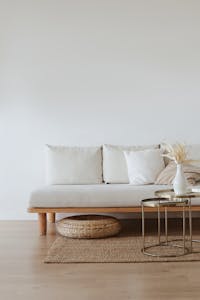
Ready to Experience the Life-Changing Benefits of Minimalism?
Are you feeling weighed down by clutter, stress, or the constant pressure to keep up with a busy life? The article you just read explored how minimalist living can help you simplify, reduce anxiety, and focus on what truly matters. If you recognized yourself in those pain points—like spending too much time managing things or struggling to find peace in your home—you’re not alone. Minimalism is a deeply personal journey, but you do not have to start from scratch.
At Simple Neat Home, you will find practical solutions tailored precisely for this journey. Our Minimalism Archives are packed with step-by-step guides, inspiring stories, and real tips that make decluttering and intentional living feel possible and rewarding. Want more hands-on help? Explore our Decluttering resources for actionable advice that moves you closer to a calm, organized life. Every tip on Simple Neat Home is designed to help you reclaim your space and your peace of mind. Take the first step today and embrace a more meaningful, stress-free lifestyle—start by visiting our site now.
Frequently Asked Questions
What are the key principles of minimalist living?
Minimalist living emphasizes simplicity, intentionality, and personal freedom. Key principles include frugality, enhanced work-life balance, emotional clarity, and environmental sustainability.
What types of minimalism are there?
Types of minimalism include digital minimalism (reducing technology use), aesthetic minimalism (focusing on simple design), practical minimalism (reducing possessions for functionality), financial minimalism (intentional spending), and emotional minimalism (decluttering relationships and thoughts).
How does minimalist living help reduce stress?
Minimalist living reduces stress by decluttering physical environments, which can lower cortisol levels and alleviate anxiety. A clean, organized space promotes mental clarity and creates a peaceful atmosphere conducive to better focus and emotional well-being.
What are the financial benefits of adopting a minimalist lifestyle?
Financial benefits include reduced impulse spending, lower overall expenses, increased savings potential, and reduced debt. By focusing on essential purchases, individuals can achieve greater financial freedom and stability.
Recommended
- Understanding the Advantages of Minimalism at Home | Simple Neat Home
- What is Minimalist Living? Understand Its Essence | Simple Neat Home
- Understanding the Benefits of Minimalist Living | Simple Neat Home
- Minimalism Archives | Simple Neat Home
- 7 Essential Home Organization Hacks for Everyone | Prodcast
